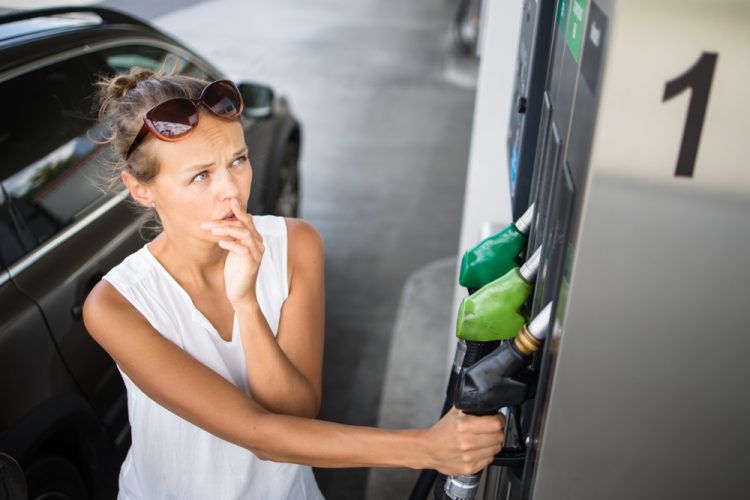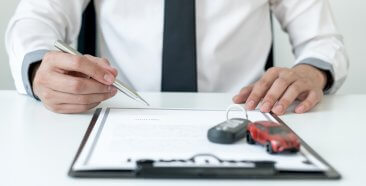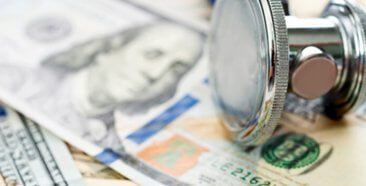
With gasoline prices continuously on the rise, you may be looking for ways to lower your fuel bill. Does driving slower save gas? How do tires play a role? The answers to these questions and more may surprise you. Keep reading to find out what a savvy consumer like you can do to save money in today’s inflationary environment.
1. How to Find the Best Gas Prices
Driving an extra 15 miles to save 5 cents on a gallon of gas doesn’t make sense. Instead, download a phone app like GasBuddy, Gas Guru or something similar so you’ll know if there is any discounted fuel near you. You may be a few miles from home or on a trip, but it never hurts to check for some low-cost gas nearby. And when you do get to your cheapest fuel station, understanding the difference between premium and regular gasoline can save you money.
2. Why Speed Matters
It’s simply a matter of aerodynamics! Excessive speed causes air resistance your vehicle has to fight against – plus your tires cause a drag on the pavement, not to mention the expense of a ticket if you get busted by that policeman with his radar gun. Your car uses more energy (gas) when it has to work against these conditions. If you go too slow, you are just spending more time with the engine running and using gas. Steady speeds and smooth starts and stops are your best bets.
3. Stop Using Your Car like a Storage Closet
Excess weight causes drag. Drag causes your car to use more energy to get from point A to point B. Keeping a first-aid kit, a sweater or light coat, wet wipes, jumper cables and a flashlight are really the only items that should live in your car fulltime. If you live in an area where it snows a lot, you can add to your emergency kit with these things you might need under winter conditions.
4. Keep Your Tires Inflated
Let’s go over drag one more time. It’s not good for your car’s fuel consumption. When tires are low, you’ll lose fuel efficiency. In fact, the U.S. Department of Energy says that for every 1-psi drop in pressure, your gas mileage will lower by .4 percent. Tires lose air more rapidly in the winter months, so check your tire pressure every couple of weeks or more frequently during serious temperature drops. Learning how to use a tire pressure gauge may save you from a flat at an inopportune time.
5. Try to Combine Trips
You probably do this anyway – most people don’t want to spend all day in the car. When you are trying to save on your gas money, combining trips just makes sense. Think ahead to what your weekly chores and trips will be and see if you can strategize the ones that are close together on the same day.
6. Avoid Idling
With today’s vehicles, it’s no longer necessary to “warm up the car” for 15 minutes. Likewise, if you are going to be sitting in a drive-through, turn it off. It won’t only save you some gas bucks, it will help the environment too. Learning how to take advantage of fuel additives can save you some serious money. In some cases, such as when your vehicle has a diesel engine, these can also help the environment.
7. Carpool
Whether to work or to your kid’s sports or band practice, there are numerous ways you – and your fellow travelers – can combine forces to save everyone some money at the pumps. Additionally, you can take advantage of park-n-rides – places where you can leave your vehicle and travel to work via bus or train.
8. Think Electric or Hybrid
In the market for a new (or new-to-you) vehicle? Don’t forget to check out the electric or hybrid vehicles for sale. They may be a little more expensive, but most states offer rebates – and nothing tops the sense of freedom from gas hikes!
Remember, driving within the speed limits, utilizing smooth stops and starts and employing your cruise control when on the highway are all good ways to keep your fuel costs at their lowest.
Save Money on Gas and Your Car Insurance
Now, you know some of the ways you can change your habits to help save some serious money on your fuel bill, but did you know you can also save money on your car insurance? At Freeway Insurance, we are all about helping people find cheap car insurance. Our friendly agents live in your neighborhood, are bilingual and can help you get insurance you can afford, even if you have a DUI on your record. Give us a call at (800) 777-5620, check out a free quote online or stop by one of our convenient locations.



